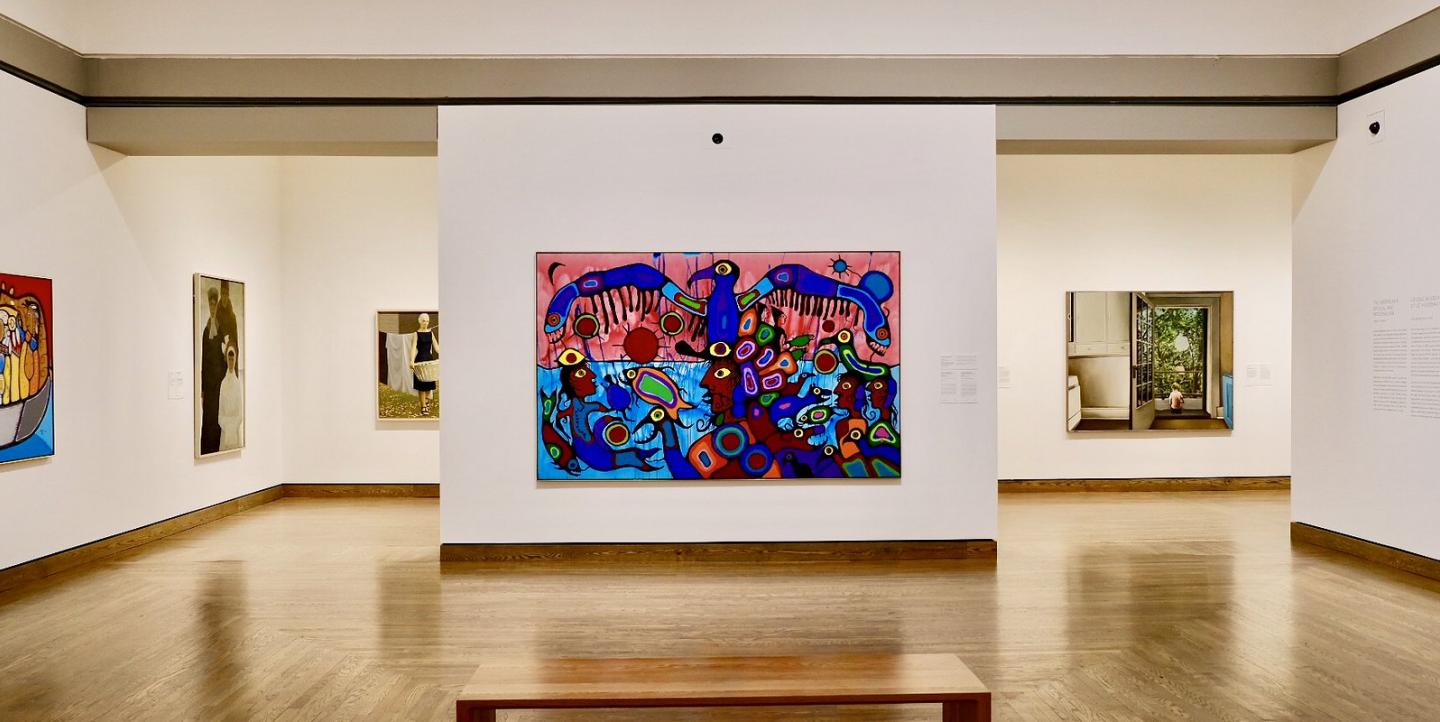Indigenous art has been, and continues to be, overlooked and misunderstood by a large portion of today’s mainstream society. Indigenous artwork carries generations of knowledge, cosmologies, history and familial and tribal stories. It is healing to report on it accurately and fairly.
Because Indigenous people account for less than 2% of the United States’ population, proper interpretation in stories is important because we do not have the leverage to address poor portrayals every time.
“Native artists are artists whose work come from their personal experiences. Therefore, their Indigenous identity is a part of that,” said Dyani White Hawk, Sicangu Lakota, a contemporary artist and curator. "They are also people who are living in this country just as any other artist, and their identities are complex and intersectional. All of those life experiences influence the work that they make.”
White Hawk was one of four panelists for the “Reporting on Indigenous Art” session during the 2019 National Native Media Conference, held at Mystic Lake Casino in Prior Lake Minnesota.
Below is a list of best practices — do’s and don’ts — for journalists of all backgrounds reporting on Indigenous artwork. Whether it’s the central element of the story or a small detail, review these guidelines before you publish.
Do’s
- Do use precise tribal identity rather than the general broad term “Native American.” When the use is broad and you are referring to Indigenous people of the entire continent, use “Indigenous,” (like we just did). However, if you’re talking about an individual piece or artist, refer to the specific tribal affiliation. Example: “Haida carving” instead of “Native American carving”
- Do your research. Make sure you have an understanding of the artist, the artwork they create and the stories that are behind it. What’s the best way to find out? Ask questions.
- Do position Indigenous artwork within the greater art community, not separate. Recently, at the Minneapolis Institute of Art, curators Teri Greeves and Jill Ahlberg Yohe curated “Hearts of Our People,” the first major art exhibition comprised of more than 115 Native women artists.
- Do recognize that histories are intertwined throughout time and have influenced one another in Indigenous artwork.
- Do recognize that Indigenous artists are on par with any other famous artists in the medium, and they should be treated as such. George Morrison (Chippewa), Jack Mallotte (Shoshone), Wendy Red Star (Crow), Dyani White Hawk (Sicangu Lakota), and Geo Neptune (Passamaquoddy) are a handful of Indigneous artists making waves in the art world.
- Do recognize the fact Indigenous artists have historically been denied recognition and work to rectify it.
Don’t’s
- Don't romanticize Indigenous art by only focusing on art that is stereotypically Indian. Indigenous artists expand all avenues of art. Name any medium and there is an Indigenous artist creating work using that medium.
- Don't confine Indigenous art to one’s concept of the past. Indigenous artists are not just painting cowboys and Indians of the Wild West, rather they are creating meaningful and impactful art.
- Don't refer to somebody as a descendant of their ancestors, unless they specifically tell you otherwise. Instead, refer to them as a tribal member or citizen When you refer to someone as a descendant of a nation, you are devaluing the validity of their lived experience as a tribal citizen.
- Don't call Indigenous artwork “craft.” Indigenous artwork is embedded with knowledge and skills the same way that art is in the mainstream, and it should be viewed and evaluated in the same way.
- Don't create a dichotomy of traditional and contemporary. Oscar Howe (Yanktonai Dakota), was a Native artist during much of the 20th century. According to South Dakota State University, “ Howe was on the cutting edge of his generation in the exploration of ways to break out of the stereotypes imposed on Indian artists and to seek contemporary ways to communicate Indian values and ideas.” In a letter to the Philbrook Indian Art Jurors, Howe wrote, "Whoever said that my paintings are not in the traditional Indian style has poor knowledge of Indian art indeed. There is much more to Indian Art than pretty, stylized pictures. There was also power and strength and individualism (emotional and intellectual insight) in the old Indian paintings. Every bit in my paintings is a true, studied fact of Indian paintings... Indian Art can compete with any Art in the world, but not as a suppressed Art."
“I would really suggest for journalists to allow Native artists to review what they are working on before publishing,” said White Hawk. “I know that is not a normal practice in the field, but because there is such a huge gap of understanding, I feel like that extra work is done to ensure the stories are done correctly.”
When a piece of art is misconstrued or misunderstood and then a story about it is published, it further perpetuates stereotypes and continues the lack of value in, and recognition of, tribal communities.
Positive examples of covering Indigenous art:
The author of this story, published in Vogue, explores the intertwining of culture and history within Indigenous women’s art.
Main image shows the painting of Anishinaabe artist Norval Morrisseau, "Artist and Shaman between Two Worlds," 1980, on display at the National Gallery of Canada, Ottawa. Image CC-licensed by Flickr via joanne clifford.
Jarrette Werk, A’aniiih and Nakoda, is a junior at the University of Nevada Las Vegas studying multimedia journalism. Werk has been a fellow of the Native American Journalists Association since 2017.

